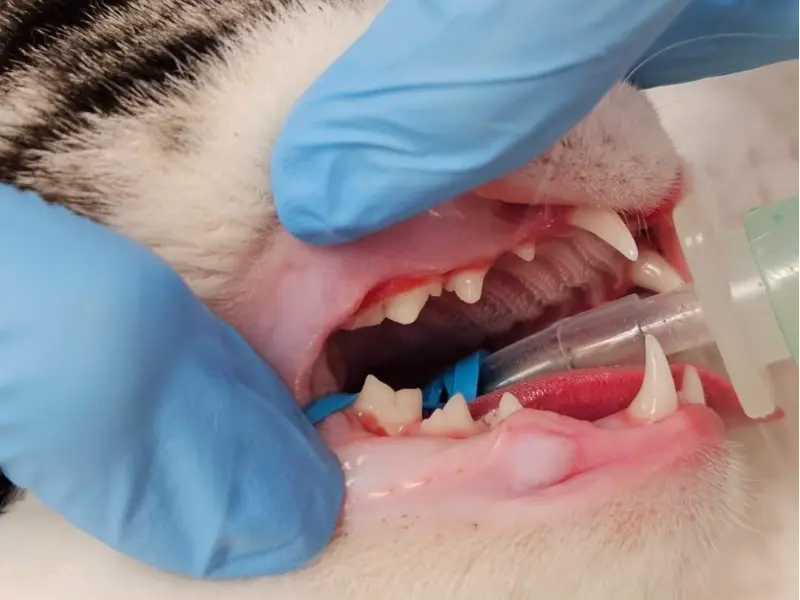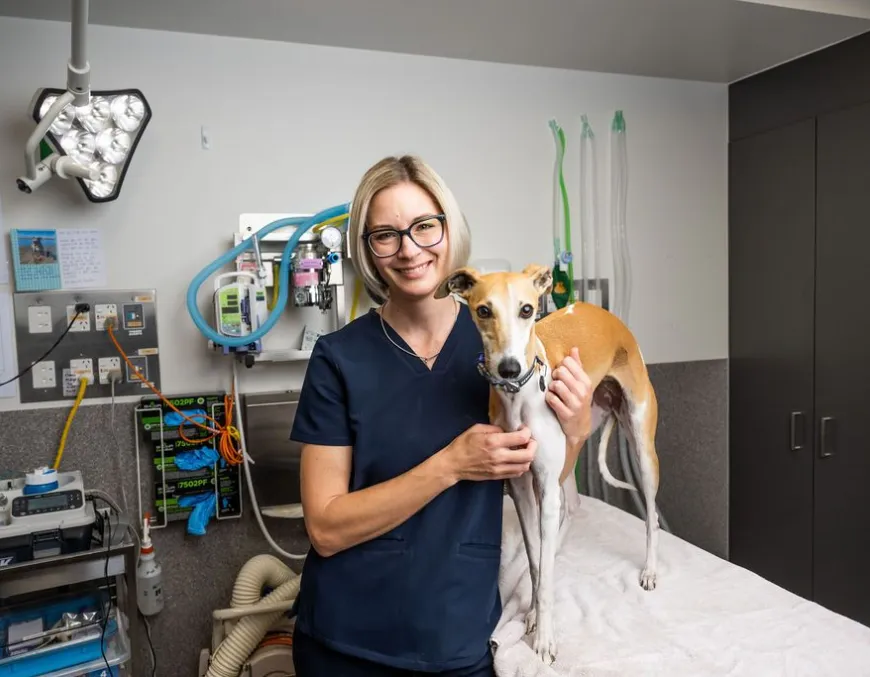Removing complex teeth safely and with minimal impact.
A caudal malocclusion is a specific type of malocclusion characterised by excessive vertical overlap or contact between the upper and lower teeth. This condition occurs when a tooth in the upper jaw damages the tissue near a lower molar, causing discomfort and potential periodontal disease. It often requires reshaping or extraction.

An overview of caudal malocclusions
Malocclusions, or bite abnormalities, occur less frequently in cats than dogs. One common traumatic malocclusion happens when the maxillary fourth premolar tooth contacts and traumatises the soft tissue next to the mandibular molar tooth. This can result in an ulcerated area beneath the mandibular molar, a cleft in the gingiva or a proliferative growth-like lesion (pyogenic granuloma). These issues can also lead to periodontal disease and, in some cases, early tooth loss.
Brachycephalic breeds, such as Persian and British Shorthair cats, along with Maine Coons, are most frequently affected by caudal malocclusion, though it can occur in any breed. This condition causes discomfort, making treatment essential.
“Malocclusions, or bite abnormalities, occur less frequently in cats than dogs.”

The odontoplasty procedure
In most cases, an odontoplasty procedure is performed on the maxillary fourth premolar tooth. This procedure involves reshaping the tip of the tooth to reduce its height and create a more rounded contour, aiming to alleviate soft tissue trauma caused by caudal malocclusion. During this procedure, dentin is exposed, which can lead to dental sensitivity. To mitigate this, a light-cured resin is applied to the exposed dentinal surface.
If significant tooth removal is necessary to eliminate trauma and the pulp chamber is entered, a vital pulpotomy or extraction may be required, though this is rare.
“In most cases, an odontoplasty procedure is performed on the maxillary fourth premolar tooth.”

Extraction as an alternative treatment
Extraction is an alternative to odontoplasty and offers a permanent solution to caudal malocclusion. It is a more invasive treatment generally reserved for cases where odontoplasty alone does not sufficiently alleviate trauma. Extraction can increase the risk of periodontal disease affecting the mandibular molar teeth due to the loss of the self-cleaning mechanism. In some cases, it may also lead to increased contact between the mandibular molar teeth and the palate, creating new points of trauma.
Additionally, proliferative tissue beneath the mandibular molar tooth may need to be resected or removed. This tissue is often sent to a pathologist to confirm its inflammatory nature.














